In this article, we explain the movements of the breaststroke kick. These movements are symmetrical and are performed with both legs at the same time.
We can divide the movements of the breaststroke kick into the following phases:
- Glide phase
- Recovery
- Catch
- Outsweep
- Insweep
- Back to glide
The following underwater video shows a race with Kosuke Katijama, where you can see the movements of the kick:
Now we will go into more detail about the different phases of the breaststroke kick.
Glide phase
We begin our explanation of leg movements with the glide phase:
- The swimmer is in the water in the prone position.
- The arms are stretched forward.
- The legs are stretched and closed, and the feet point backward.
- The head is in a neutral position in the water, and the face is turned downward.

Recovery
The recovery of the legs starts at the end of the propulsive phase of the arm stroke (insweep).
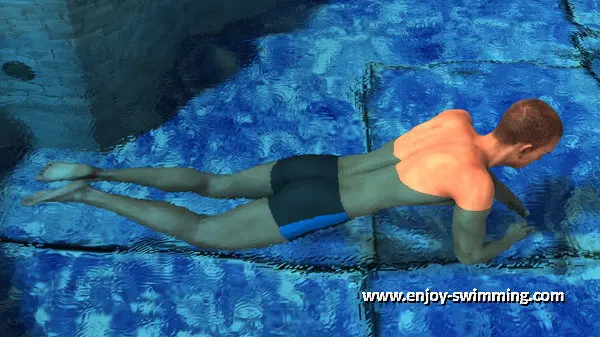
At this moment, the head and shoulders are above water, and the hips are slightly underwater, so that the body is in the inclined position.
At the beginning of the recovery, the knees are bent, and the heels are drawn towards the buttocks. At the same time, the feet are also bent (back of the feet drawn towards the shins).
The knees should remain close together but without touching. Toward the end of the recovery, when the feet are close to the buttocks, the hips bend slightly.
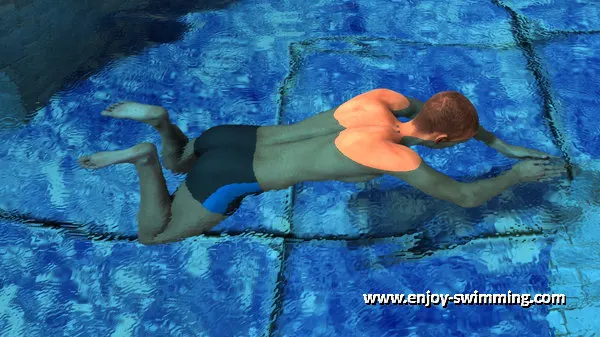
Catch
During the catch, the legs are brought into a position that ensures a good grip on the water. This allows the legs to efficiently generate propulsion in the next phase of the kick (outsweep).
The catch is initiated when the knees are fully bent, and the heels are close to the buttocks. Now the knees are moved shoulder-width apart, and the feet are turned outward so that the insides of the feet are facing outward and backward.
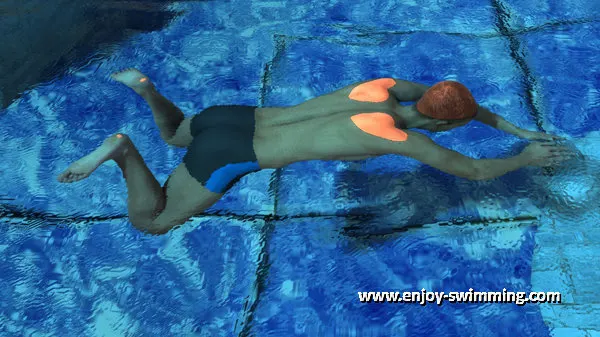
Outsweep
The outsweep begins after assuming the position of the catch. The legs are extended, and the knees are spread further apart so that the inside of the feet and the lower leg push outward and backward against the water and create propulsion.
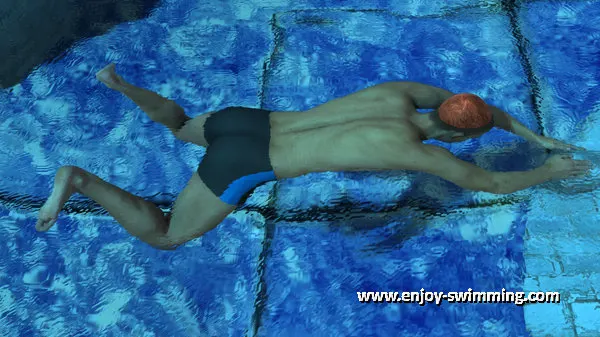
Insweep
During the insweep, the legs continue to be extended, but they are also drawn together.
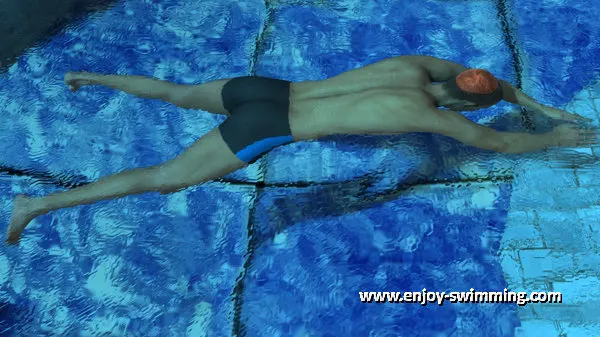
Also, during this phase, the feet, which were previously turned outward, are now turned inward.
At the end of the insweep, the legs are fully extended and lying together with the feet almost touching.
Back to Glide
In the last phase of the breaststroke kick, the legs move up a little more because of inertia. At the same time, the feet are also stretched so that they point backward again.
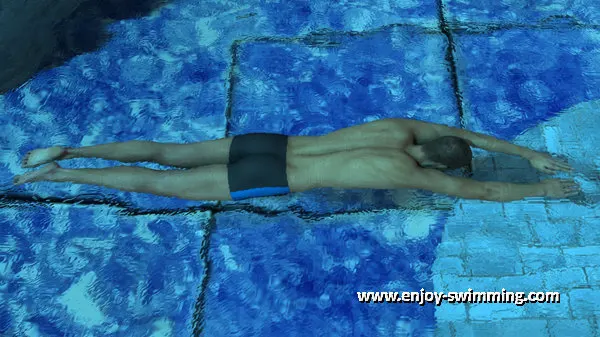
Now a short glide phase is observed in this streamlined position before the stroke cycle starts again.
Additional Notes
As mentioned above, initially, only the knees bend during the leg recovery.
This ensures that, in the horizontal position, the thighs remain in the wake of the upper body, and so generate less drag.
However, when the head and shoulders are raised above the surface of the water, the body assumes a more inclined position, and the hips can also be flexed a bit without sacrificing the swimmer’s slipperiness.
This allows the heels to be drawn further towards the buttocks without the feet breaking the surface of the water.
Learning the Breaststroke Kick
It can make sense to practice the movements of the breaststroke kick at home first. This way, you can go through the movements of this swimming technique at your leisure and memorize them.
To that end, in our article on learning the breaststroke kick, we’ve rounded up some of the dry-land exercises you can do at home.
Related Pages
You may also be interested in the following articles that cover the breaststroke’s swimming technique:

Larry
Thursday 6th of October 2016
I just posted a comment, but I forgot to include a question, so I am posting my comment again.
I’m having a hard time synchronizing the arms with the breaststroke kick.
During what phase of the arms do I start the kick or bring my heels up? Does the kick start after the recovery phase, while I am pushing my arms forward into a streamline position?
Should my face be in or out of the water when I am bringing my heels up to start the breaststroke kick?
Thanks for your help.
Christophe
Monday 24th of October 2016
Hi Larry,
There's a bit of overlap between the arm stroke cycle and the leg kicking cycle.
The recovery of the legs starts at the end of the arms' insweep (when the hands move toward each other, below the chest).
The kick (propulsive phase of the legs) starts toward the middle/end of the arm recovery forward.
It takes some practice to coordinate the arm/leg movements.
You can see a slow-motion underwater video of breaststroke here: https://www.enjoy-swimming.com/breast-stroke.html